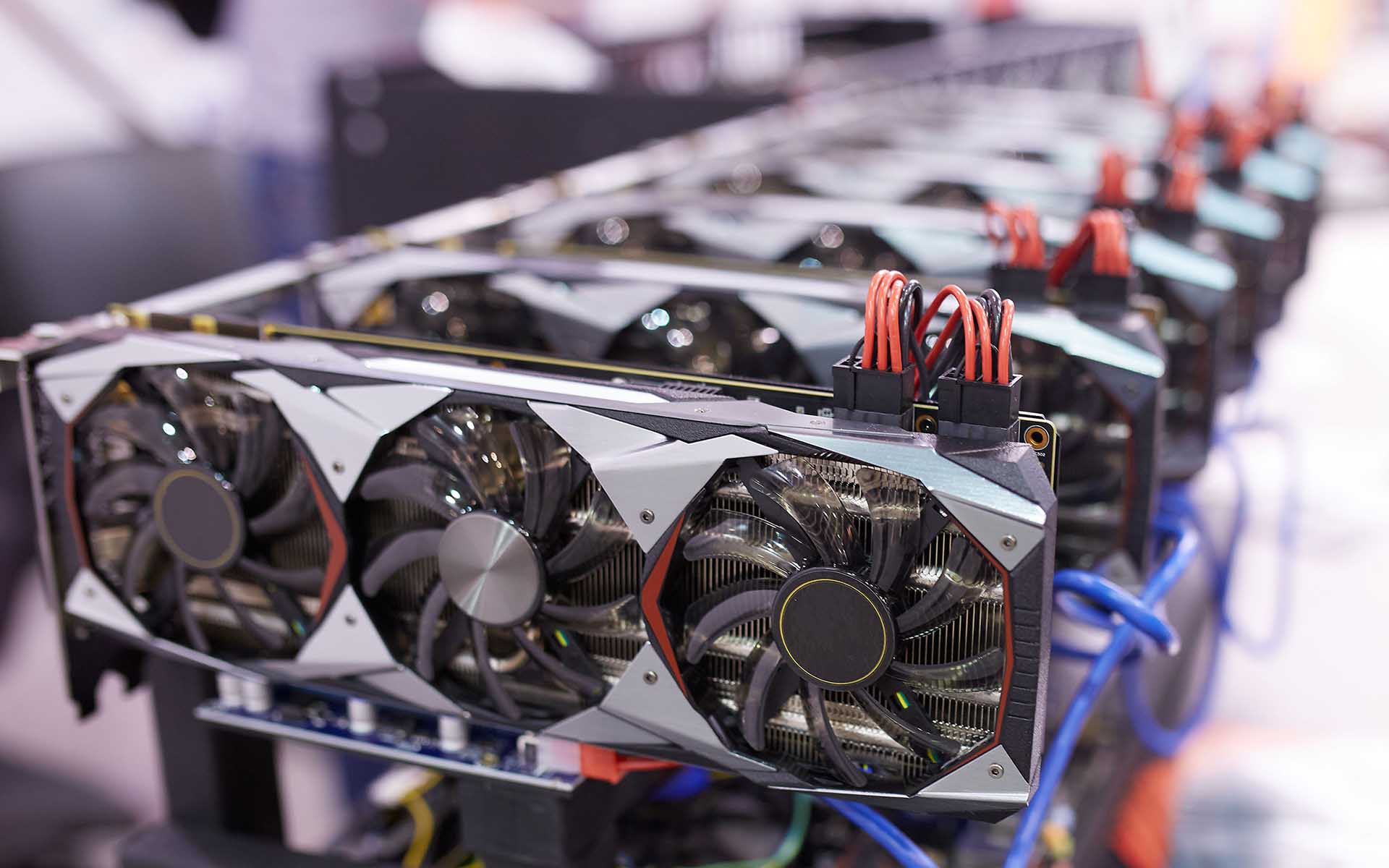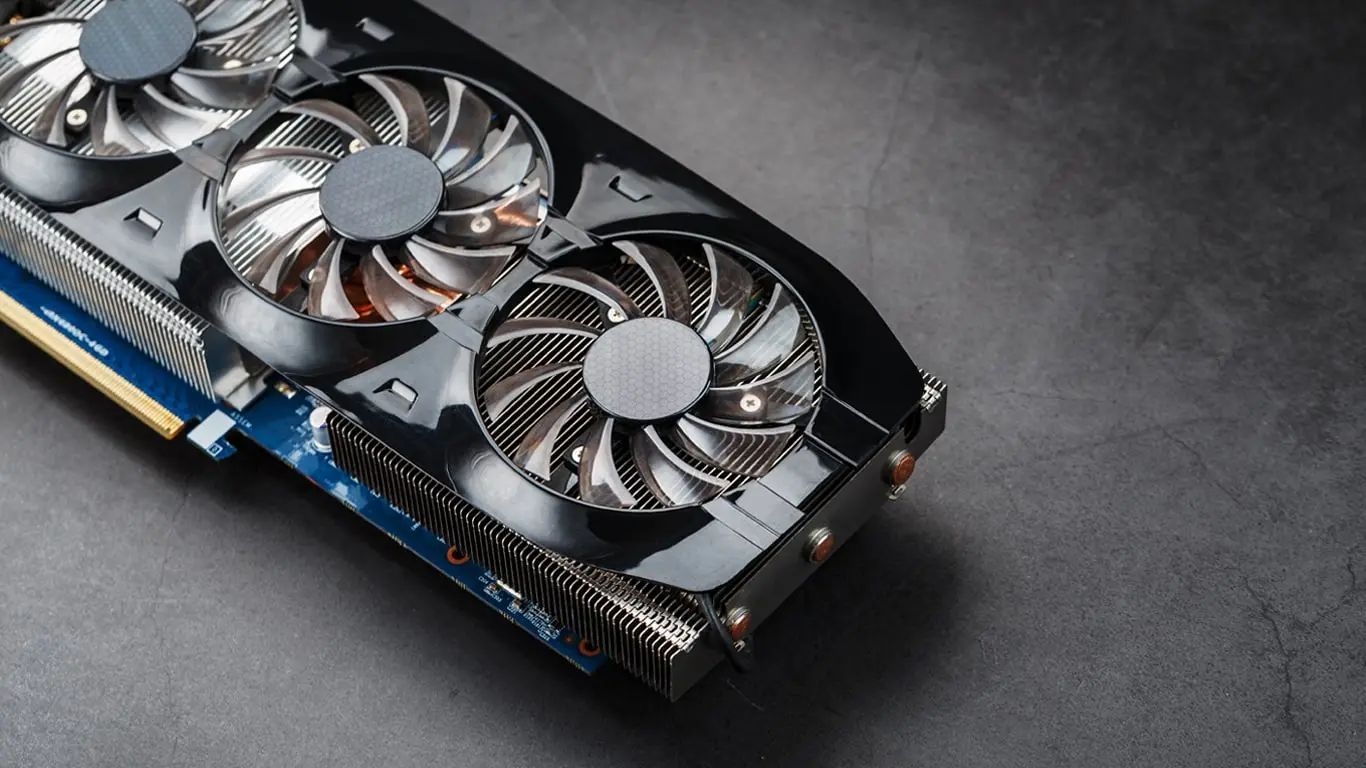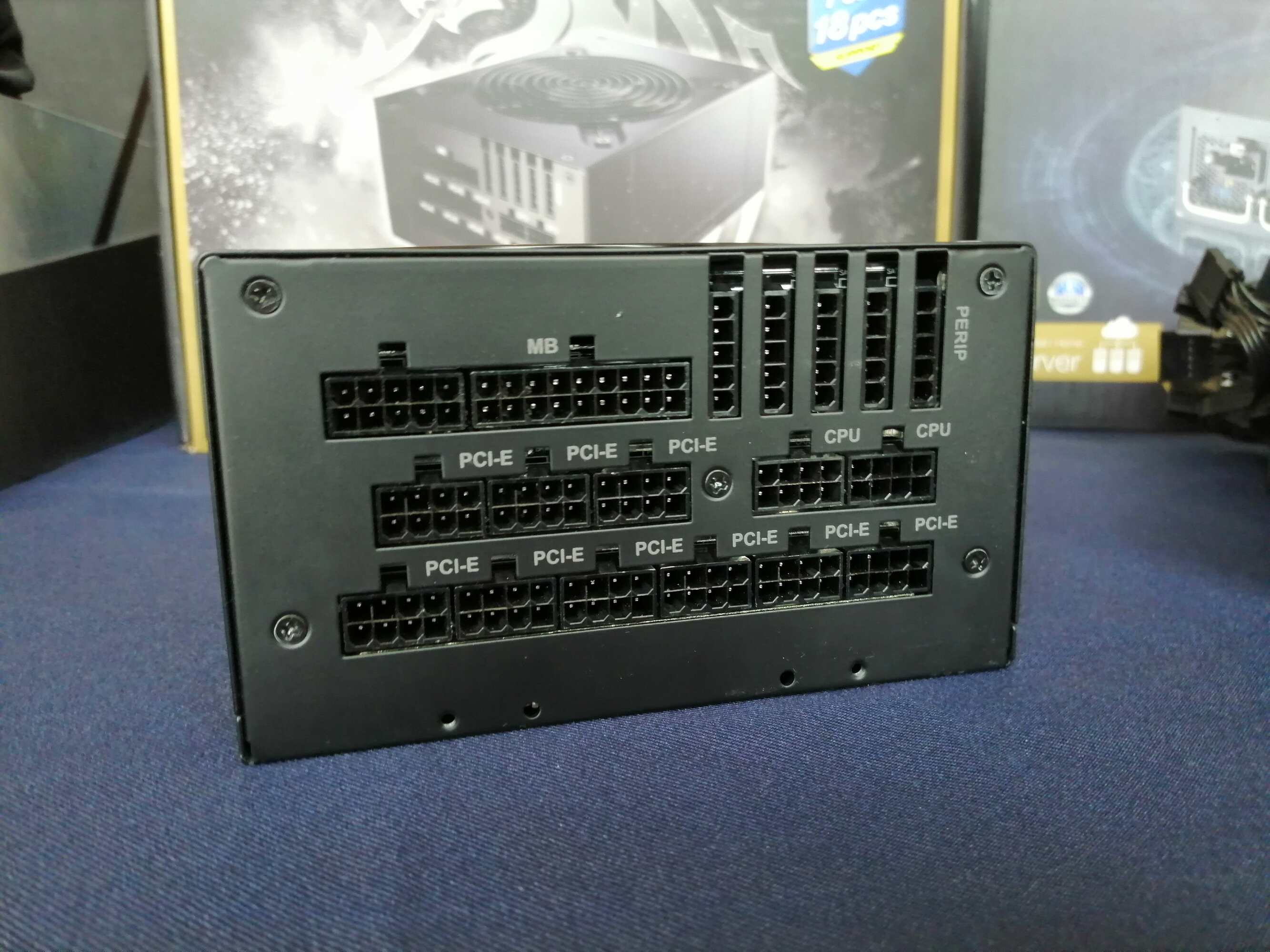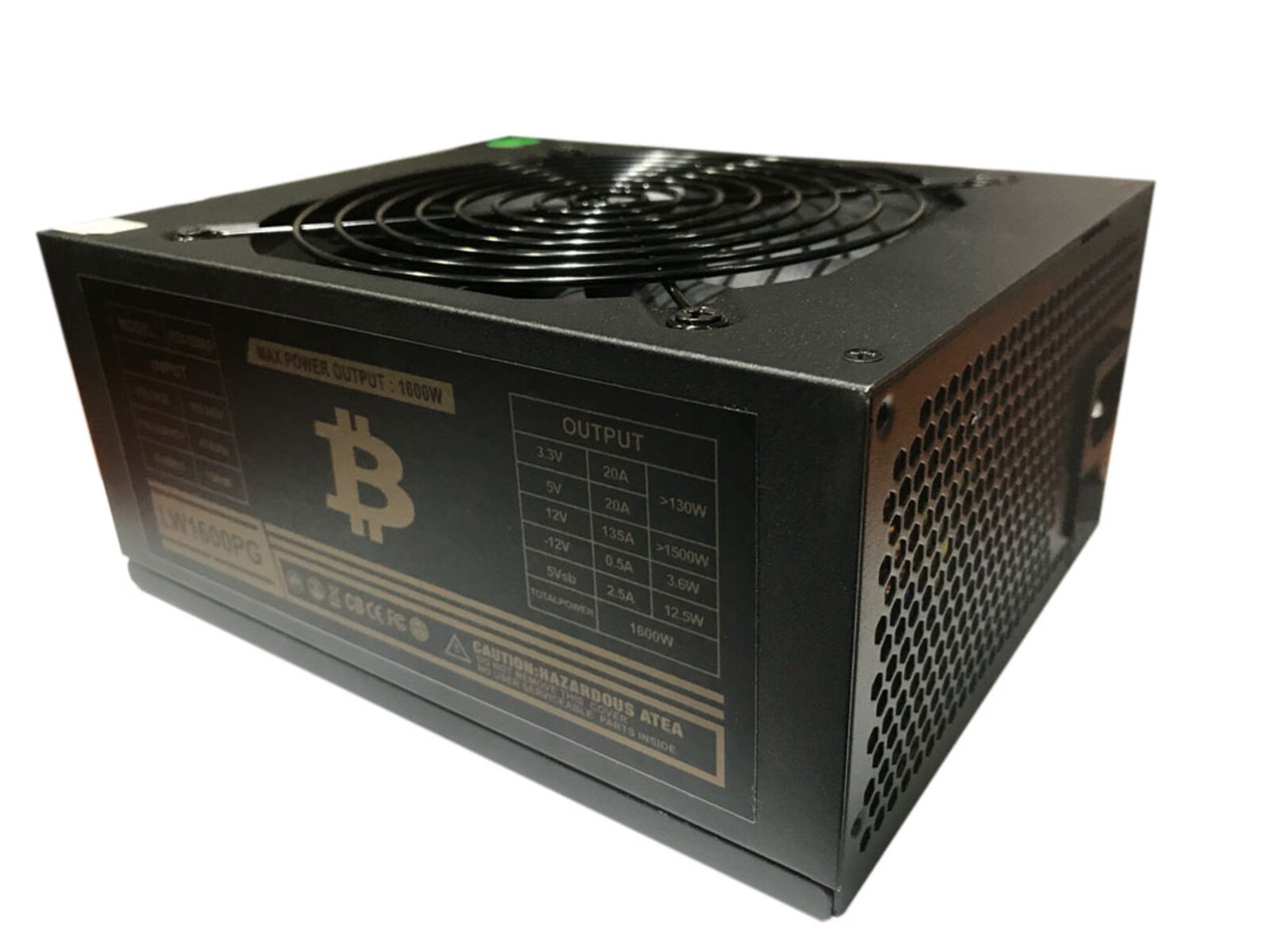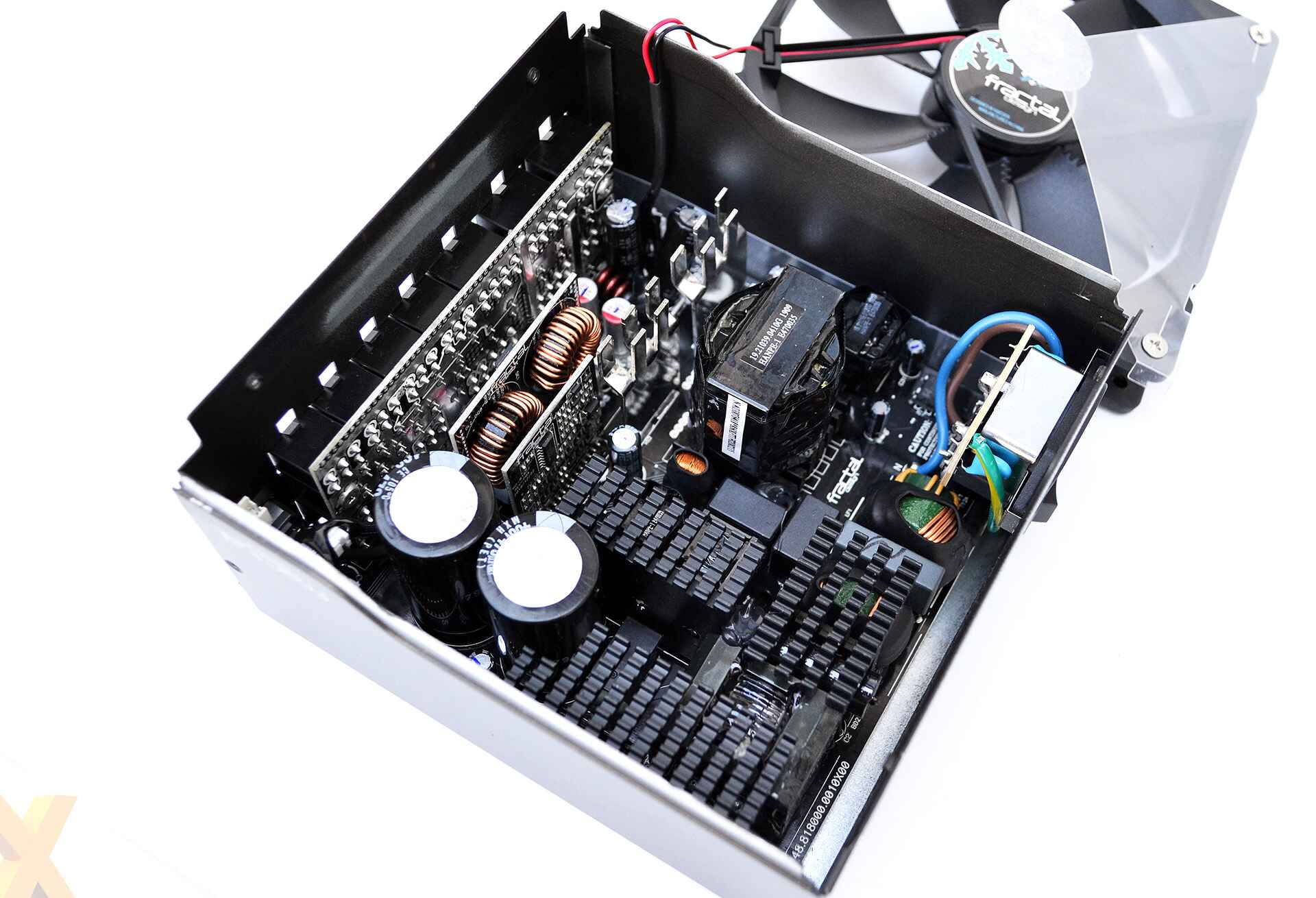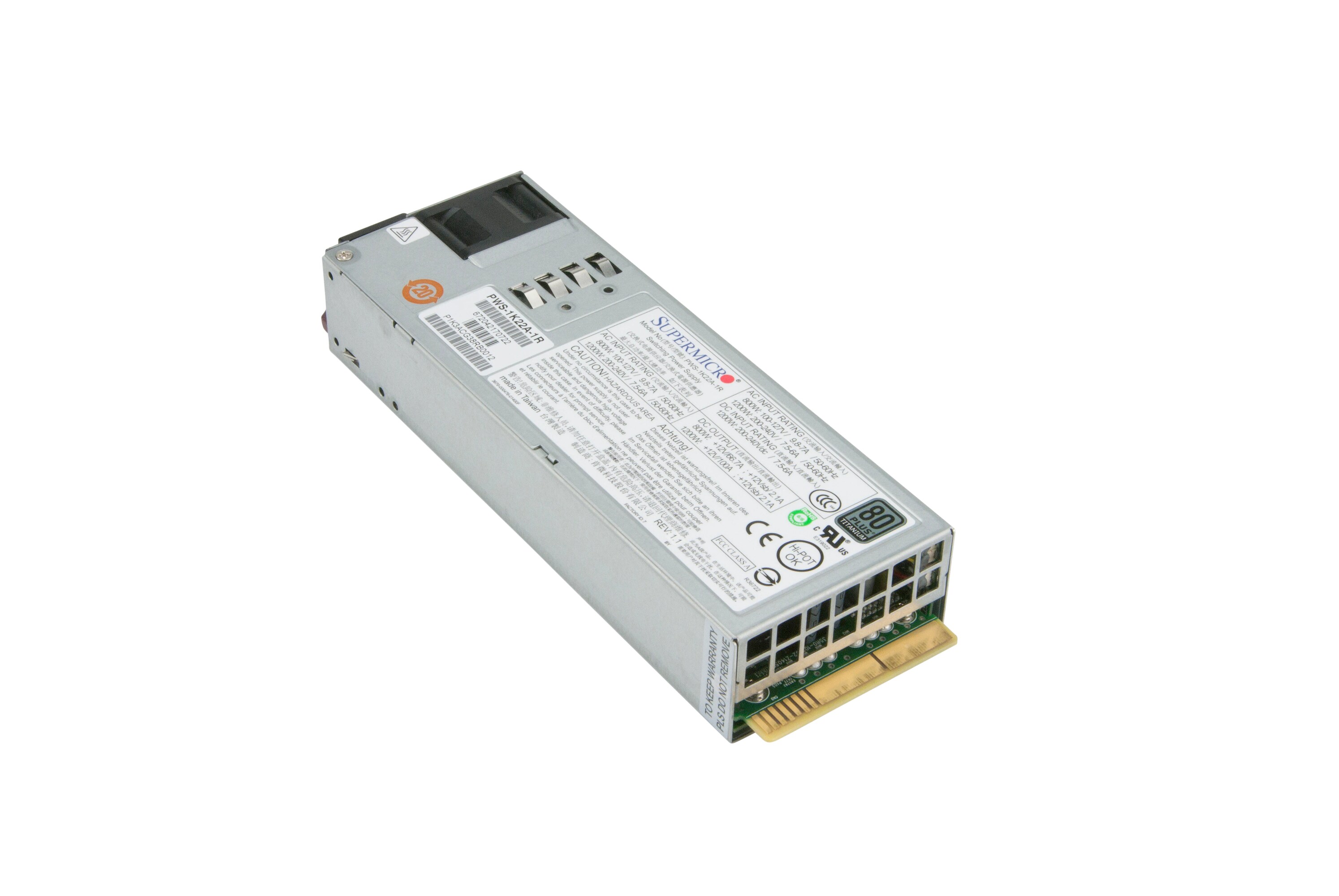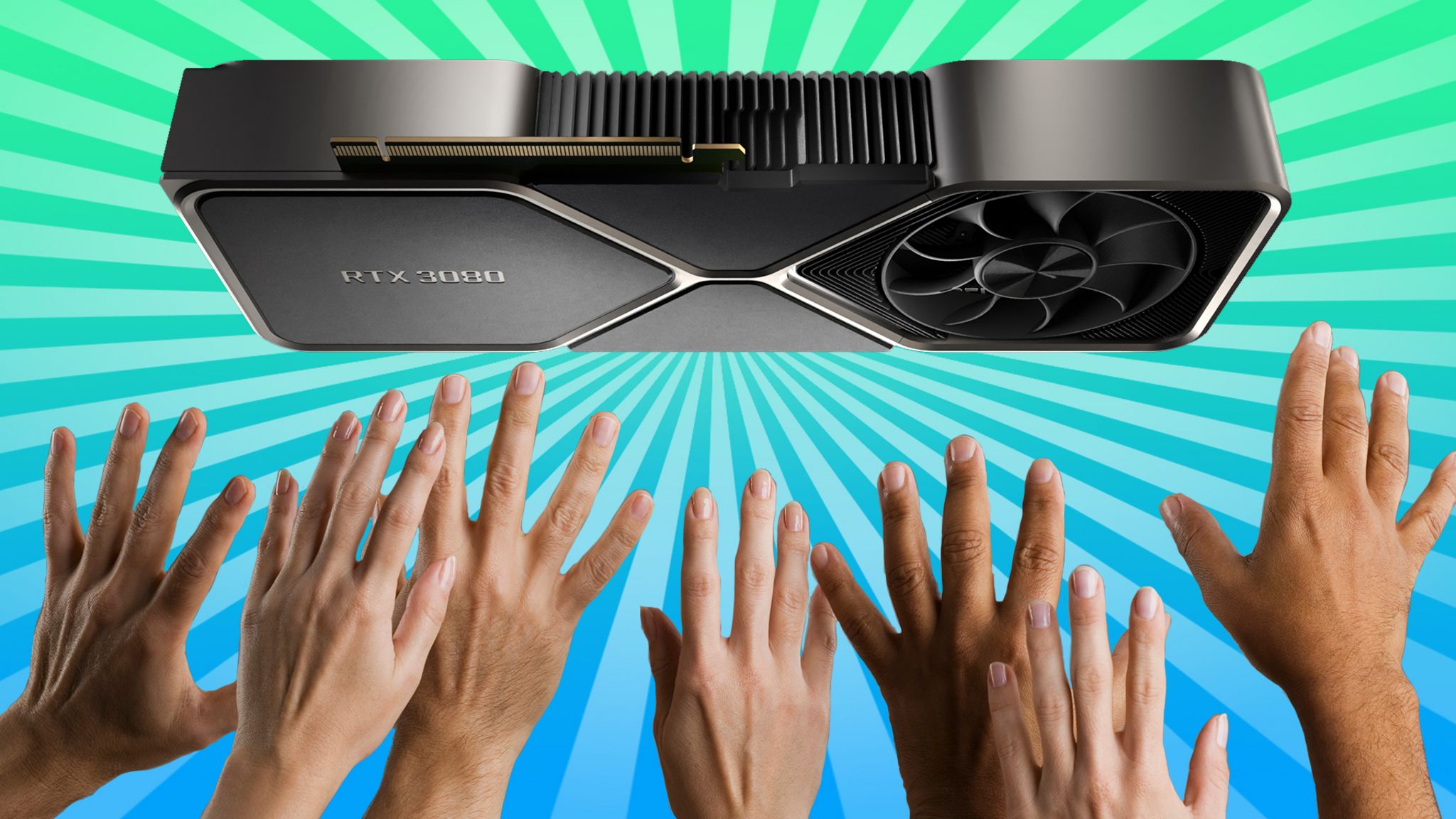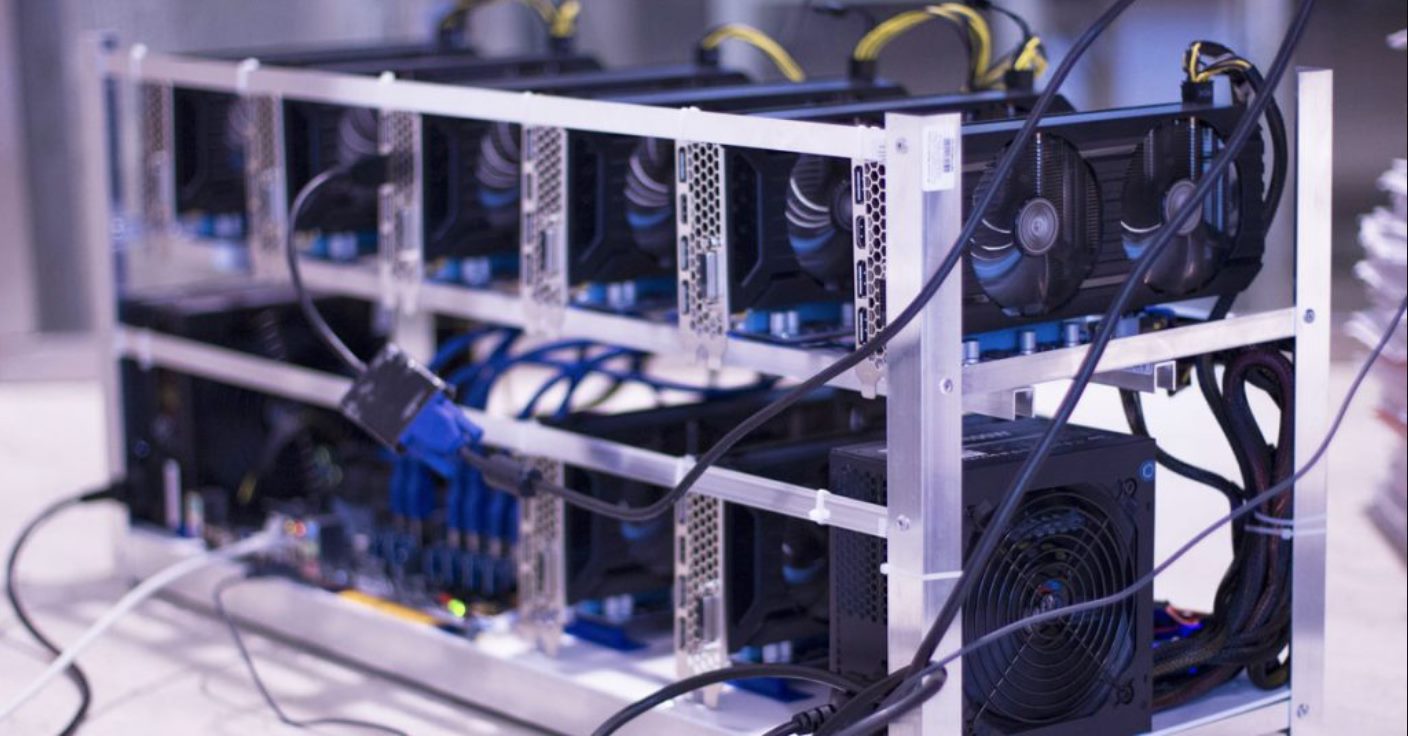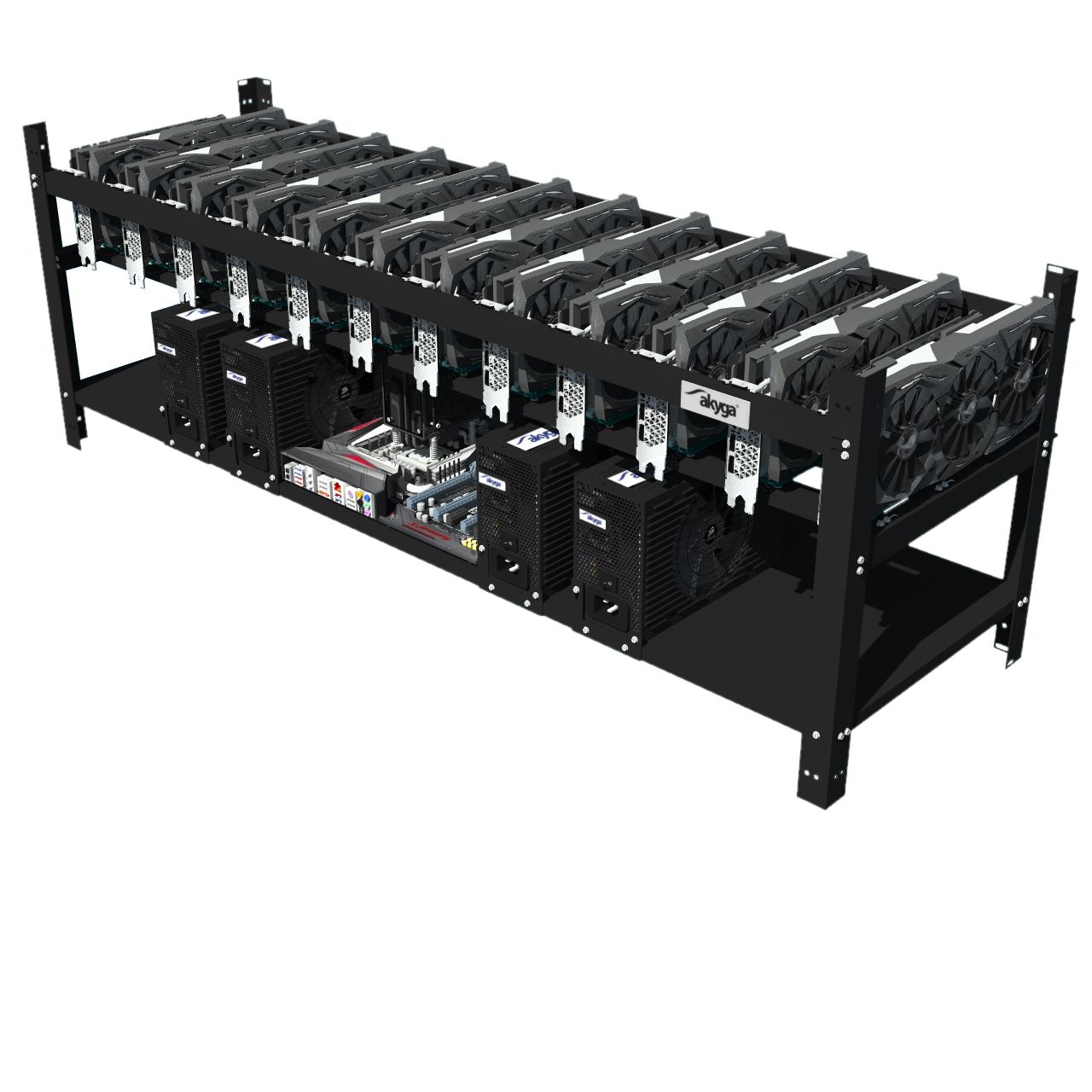Introduction
Graphics card mining has become increasingly popular in recent years, with individuals and businesses alike seeking to harness the power of specialized hardware to mine cryptocurrencies. As the demand for digital currencies continues to surge, more people are turning to graphics card mining as a way to generate profits. But what exactly is graphics card mining and how does it work?
Graphics card mining, also known as GPU mining, involves using graphics processing units (GPUs) to solve complex mathematical problems. These problems, also known as algorithms, are essential for verifying transactions and securing the decentralized network of a cryptocurrency.
Graphics card mining relies on the parallel processing power of GPUs, which are capable of performing multiple calculations simultaneously. This makes GPUs more efficient for mining cryptocurrencies as compared to traditional central processing units (CPUs). The use of GPUs allows miners to solve algorithms faster and potentially earn more rewards.
With the increasing popularity of cryptocurrencies like Bitcoin and Ethereum, graphics card mining has gained significant attention. Not only can individuals mine cryptocurrencies from their own homes, but large-scale mining operations have also emerged, driving the demand for powerful GPUs.
In this article, we will explore the intricacies of graphics card mining, including its working mechanism, the different mining algorithms, the advantages and disadvantages of graphics card mining, and how it compares to other mining methods. We will also delve into the process of choosing the right graphics card for mining, setting up a mining rig, and the profitability and risks associated with graphics card mining. Whether you are a beginner looking to start mining or an experienced miner seeking to optimize your setup, this article will provide you with valuable insights and tips for successful graphics card mining.
What is Graphics Card Mining?
Graphics card mining, also known as GPU mining, is the process of using specialized hardware called graphics processing units (GPUs) to solve complex mathematical problems. These problems, known as mining algorithms, are an essential part of the validation and verification process for transactions made on a blockchain network.
When it comes to mining cryptocurrencies like Bitcoin or Ethereum, graphics card mining has become the go-to method for many miners. This is because GPUs are highly efficient in parallel processing, meaning they can perform multiple calculations simultaneously. Compared to traditional central processing units (CPUs) that are designed for general-purpose computing, GPUs can execute mining algorithms much faster.
The primary purpose of graphics card mining is to contribute computational power to the network and help maintain the decentralized nature of cryptocurrencies. By solving complex algorithms, miners are able to confirm and record transactions on the blockchain, ensuring the accuracy and security of the network.
One of the reasons why graphics card mining has gained significant popularity is the potential for financial rewards. Miners are rewarded with newly minted coins or transaction fees, depending on the specific cryptocurrency being mined. This can be a lucrative venture, particularly when the value of the cryptocurrency increases over time.
In addition to mining popular cryptocurrencies like Bitcoin and Ethereum, graphics card mining can also be used for mining alternative cryptocurrencies, commonly referred to as altcoins. These altcoins often use different mining algorithms that are specifically optimized for graphics card mining, offering an opportunity for miners to diversify their mining operations.
Graphics card mining has become a widespread practice, with individual miners setting up mining rigs at home and large-scale mining operations being established around the world. However, it’s important to note that as more miners join the network, the difficulty level of mining algorithms increases, requiring more computational power and energy consumption to mine effectively.
In the following sections, we will delve deeper into how graphics card mining works, the different mining algorithms used, the advantages and disadvantages of this mining method, and how it compares to other types of mining. We will also provide insights on choosing the right graphics card for mining, setting up a mining rig, and the profitability and risks associated with graphics card mining.
How Does Graphics Card Mining Work?
Graphics card mining leverages the computational power of graphics processing units (GPUs) to solve complex mathematical puzzles, also known as mining algorithms. These algorithms serve as the backbone of cryptocurrency networks, allowing for the verification and recording of transactions on the blockchain.
When a miner engages in graphics card mining, their GPUs perform intense calculations to find a solution to the mining algorithm. The miner’s goal is to find a hash value that meets the specific criteria set by the algorithm. This process is known as “hashing.”
Hashing involves taking input data, such as a block of transactions, and running it through a cryptographic hashing function. The output, known as the hash value, is a unique alphanumeric string that represents the input data in a fixed-length format. Each hash value is distinct, meaning even a slight change in the input data will produce a completely different hash value.
In graphics card mining, miners use GPUs to perform millions of calculations simultaneously, testing different input values to find a hash that meets the criteria set by the mining algorithm. This requires a tremendous amount of computational power and energy.
Once a miner successfully finds a hash value that satisfies the algorithm’s requirements, they notify the network of their accomplishment. This completed computation is known as a “proof of work” (PoW), demonstrating that the miner has put in the computational effort required to solve the algorithm. Other nodes in the network will then verify the validity of the proof of work before adding the block of transactions to the blockchain.
As more miners participate in the network, the difficulty of the mining algorithm is adjusted to maintain a consistent block time. This ensures that new blocks are added to the blockchain at a predictable rate, preventing any single miner or group of miners from monopolizing the network’s computational power.
Graphics card mining can be a highly competitive endeavor, with miners constantly upgrading their hardware to gain an edge and increase their chances of solving the mining algorithm. Additionally, mining pools have emerged, where multiple miners combine their computational power to mine collectively and share the rewards proportionally.
The process of graphics card mining requires specialized software that communicates with the mining hardware, manages the mining operations, and connects the miner to the blockchain network. These mining software programs provide an interface for configuring mining settings, monitoring performance, and tracking mining statistics.
It’s important to note that the profitability of graphics card mining is influenced by several factors, including the cost of electricity, the market value of the mined cryptocurrency, and the efficiency of the mining hardware setup. As the cryptocurrency landscape continues to evolve, miners must adapt their strategies and stay updated with the latest developments.
In the next sections, we will explore different mining algorithms, the advantages and disadvantages of graphics card mining, and how it compares to other mining methods. We will also provide guidance on selecting the right graphics card for mining, setting up a mining rig, and addressing the profitability and risks associated with graphics card mining.
Mining Algorithms
Mining algorithms are at the core of graphics card mining, as they determine the computational tasks that need to be performed in order to solve the complex mathematical problems necessary for cryptocurrency mining. Each mining algorithm has its unique characteristics and requirements, influencing the choice of hardware and the efficiency of the mining process.
There are several mining algorithms commonly used in graphics card mining, including:
- SHA-256 (Secure Hash Algorithm 256-bit): This algorithm is widely used in Bitcoin mining. It performs a series of calculations on the input data, creating a hash value that must meet specific criteria. SHA-256 is a computationally intensive algorithm, requiring powerful hardware to mine Bitcoin efficiently.
- Ethash: Ethash is the mining algorithm used by Ethereum and other cryptocurrencies based on the Ethereum blockchain. It is designed to be memory-intensive, making it more GPU-friendly than CPU-friendly. Ethash ensures a fair distribution of mining rewards and has a built-in mechanism to prevent the dominance of specialized mining hardware.
- Equihash: Equihash is utilized by cryptocurrencies such as Zcash and Bitcoin Gold. It is a memory-oriented algorithm that requires a significant amount of RAM. Equihash’s memory requirements make mining with GPUs more efficient than with CPUs, promoting a competitive mining ecosystem.
- Scrypt: Scrypt is commonly used in mining Litecoin and other alternative cryptocurrencies. It is memory-hard, meaning it requires a large amount of memory to perform calculations. This mining algorithm was developed to discourage the use of specialized mining hardware, making it more accessible to a wider range of miners.
These are just a few examples of the many mining algorithms that exist. Each algorithm serves a different purpose and comes with its own set of requirements and characteristics. Some algorithms are more resistant to ASIC (application-specific integrated circuit) mining, which is specialized mining hardware designed for specific algorithms, while others are optimized for GPU mining.
As the landscape of cryptocurrencies continues to evolve, new algorithms may be developed to address specific needs or to improve security. It’s crucial for miners to stay updated with the latest developments and consider the compatibility of mining algorithms with their hardware when choosing which cryptocurrencies to mine.
In the upcoming sections, we will explore the advantages and disadvantages of graphics card mining, compare it to other mining methods, and provide guidance on selecting the right graphics card for mining, setting up a mining rig, and addressing the profitability and risks associated with graphics card mining.
Advantages of Graphics Card Mining
Graphics card mining offers several advantages that have contributed to its popularity among cryptocurrency miners. Here are some of the key advantages of graphics card mining:
- High computational power: Graphics processing units (GPUs) are designed to handle parallel processing, allowing them to perform multiple calculations simultaneously. This gives GPUs a significant advantage over central processing units (CPUs) in terms of mining efficiency and speed.
- Flexibility and versatility: Graphics cards can be used for a wide range of mining algorithms and cryptocurrencies. Unlike specialized mining hardware (ASICs), which are designed for specific algorithms, GPUs can adapt to different mining needs, making them more versatile and future-proof.
- Access to a wide range of cryptocurrencies: Graphics card mining provides access to a broader range of cryptocurrencies beyond Bitcoin. Many alternative cryptocurrencies (altcoins) can be mined using GPUs, offering miners the opportunity to diversify their mining portfolio and potentially discover new coins with significant value.
- Fair and decentralized mining: GPU mining helps to maintain the decentralization of cryptocurrencies by enabling a wider distribution of mining power. Unlike ASIC mining, which can concentrate power in the hands of a few specialized miners, graphics card mining allows individual miners to participate in the network and contribute to the verification and security of the blockchain.
- Lower cost of entry: Compared to ASIC mining, graphics card mining generally has a lower cost of entry. GPUs are more affordable and readily available, allowing smaller-scale miners to start mining with relatively less investment. This accessibility promotes a more inclusive mining community.
- Higher resale value: Graphics cards have a higher resale value compared to specialized mining hardware. In the event that a miner decides to exit mining or upgrade their equipment, they can often recoup a significant portion of their investment by selling their GPUs on the secondary market.
These advantages have made graphics card mining a popular choice among cryptocurrency miners. However, it is important to consider the potential downsides and challenges associated with this mining method, which we will explore in the following sections.
Disadvantages of Graphics Card Mining
While graphics card mining offers several advantages, it also comes with certain disadvantages that miners should be aware of. Here are some of the key drawbacks of graphics card mining:
- High energy consumption: Graphics card mining requires a significant amount of electricity to power the mining rigs. The energy consumption of GPUs can be quite substantial, leading to increased electricity costs, especially in regions with high electricity rates. Miners need to carefully consider the cost-effectiveness and sustainability of their mining operations.
- Increased competition and difficulty: As more miners enter the network, the competition for mining rewards intensifies. This leads to an increase in the mining difficulty, making it more challenging to solve mining algorithms and earn rewards. Miners may need to continually upgrade their equipment or join mining pools to remain competitive.
- Hardware limitations: While graphics cards are versatile and can mine a wide range of cryptocurrencies, there are limitations to their capabilities. Some mining algorithms may be better suited for specialized mining hardware, such as ASICs, leading to reduced mining efficiency and profitability for graphics card miners.
- Noise and heat generation: Mining rigs powered by graphics cards can generate a significant amount of heat and noise. The constant operation of GPUs at high processing power can result in elevated temperatures in the mining environment, necessitating good ventilation and cooling systems. Additionally, the noise generated by the fans of multiple GPUs can be a nuisance in residential or office settings.
- Risk of hardware failure: The intensive use of graphics cards for mining can put strain on their components, potentially leading to hardware failures or reduced lifespan. Miners need to closely monitor the temperature and usage of their GPUs to ensure optimal performance and prevent damage to their equipment.
- Market volatility and profitability: The profitability of graphics card mining is subject to the volatility of cryptocurrency markets. The value of mined coins can fluctuate significantly, impacting the profitability of mining operations. Miners need to consider market trends and assess the potential risks and rewards associated with mining specific cryptocurrencies.
These disadvantages highlight the challenges and considerations that graphics card miners must navigate. It is crucial to carefully evaluate the costs, benefits, and risks associated with graphics card mining before engaging in this activity.
In the following sections, we will compare graphics card mining to other mining methods, discuss how to choose the right graphics card for mining, and explore the process of setting up a mining rig. We will also address the profitability and risks associated with graphics card mining to provide a comprehensive understanding of this mining approach.
Graphics Card Mining vs Other Mining Methods
When it comes to cryptocurrency mining, graphics card mining is just one of several mining methods available. Each mining method has its own advantages and disadvantages, and the choice of method depends on various factors such as the specific cryptocurrency being mined, the mining algorithm used, and the resources available to the miner. Let’s compare graphics card mining to other popular mining methods:
- CPU Mining: Central processing unit (CPU) mining is the traditional method of mining using the computer’s CPU. While CPUs are generally less powerful and slower compared to graphics cards, CPU mining can still be viable for certain cryptocurrencies with less computationally intensive mining algorithms. However, CPU mining is usually less efficient and less profitable compared to graphics card mining.
- ASIC Mining: Application-specific integrated circuit (ASIC) mining involves using specialized hardware specifically designed for a particular mining algorithm. ASICs offer significantly higher mining efficiency and performance compared to graphics cards or CPUs. They are purpose-built to perform a single task, resulting in faster mining speeds and lower energy consumption. However, ASICs are expensive, less versatile, and may require frequent hardware upgrades due to algorithm changes.
- Cloud Mining: Cloud mining allows miners to rent mining hardware remotely from a mining service provider. This method eliminates the need to purchase and maintain physical mining rigs. However, cloud mining typically involves the payment of fees and the inherent risk of scams or unreliable service providers. The profitability of cloud mining can also be affected by the fluctuating prices of cryptocurrencies and the fees charged by the provider.
- FPGA Mining: Field-programmable gate array (FPGA) mining is a middle ground between CPU mining and ASIC mining. FPGAs are programmable integrated circuits that offer higher performance than CPUs but are more flexible and versatile than ASICs. FPGA mining rigs can be reprogrammed to adapt to different mining algorithms, making them ideal for mining multiple cryptocurrencies.
Graphics card mining stands out due to its versatility, accessibility, and relatively lower cost compared to ASIC mining. Graphics cards can be used to mine a variety of cryptocurrencies, offering miners the flexibility to adapt to changing market conditions and choose from a wide range of mining opportunities. Additionally, graphics card mining allows for a more decentralized mining ecosystem, as it relies on consumer-grade hardware that is widely available and accessible.
However, it is important to note that as mining difficulty increases and the market becomes more competitive, the advantages of graphics card mining may diminish. In some cases, the efficiency and profitability of specialized mining hardware like ASICs may outweigh the benefits of graphics cards in certain mining scenarios.
Ultimately, the choice of mining method depends on various factors such as budget, time commitment, mining goals, and the specific characteristics of the targeted cryptocurrency. Miners should carefully evaluate their options and consider their unique circumstances before deciding on the most suitable mining method.
In the upcoming sections, we will discuss how to choose the right graphics card for mining, the process of setting up a mining rig, and address the profitability and risks associated with graphics card mining.
Choosing the Right Graphics Card for Mining
Choosing the right graphics card is crucial for successful and profitable mining. The graphics card’s mining performance, power consumption, and price are key factors to consider. Here are some important considerations when selecting a graphics card for mining:
- Mining Performance: The mining performance of a graphics card is determined by factors such as its hash rate, memory capacity, and core clock speed. A higher hash rate indicates faster mining speeds and increased chances of solving mining algorithms. Review benchmarks and comparisons to identify GPUs with strong mining performance for the specific algorithm or cryptocurrency you intend to mine.
- Power Consumption: Energy consumption is a critical factor to consider as mining rigs operate continuously and consume a significant amount of electricity. Look for graphics cards that offer a balance between high mining performance and low power consumption. Choosing an energy-efficient graphics card will help reduce operational costs and increase profitability.
- Price and Availability: Consider the price of the graphics card in relation to its mining performance and long-term profitability. Due to the high demand for graphics cards in mining, prices may fluctuate, and certain models may be limited in availability. Factor in the return on investment (ROI) and payback period when evaluating the cost-effectiveness of a graphics card.
- Cooling and Reliability: Mining generates a significant amount of heat, so it is important to choose graphics cards with efficient cooling systems that can maintain optimal temperatures. Look for cards with high-quality fans or cooling solutions to ensure stable and reliable mining operations. Additionally, consider the warranty and customer support provided by the manufacturer to address any potential issues or failures.
- Compatibility and Future-Proofing: Ensure that your selected graphics card is compatible with your mining setup, including the motherboard, power supply, and mining software. Additionally, consider the future compatibility of the graphics card with upcoming mining algorithms or potential changes in the cryptocurrency ecosystem.
It is recommended to research and compare different graphics cards based on their mining performance, power consumption, price, and cooling capabilities. Online forums, mining communities, and reputable hardware review websites can provide valuable insights and user experiences to guide your decision.
Keep in mind that mining profitability is influenced by several factors, including the current market conditions and the efficiency of your mining setup as a whole. Therefore, choosing the most suitable graphics card is just one aspect of optimizing your mining operations.
In the following sections, we will discuss the process of setting up a mining rig, including the necessary hardware and software components, and explore the profitability and risks associated with graphics card mining.
Setting Up a Graphics Card Mining Rig
Setting up a mining rig is a crucial step in graphics card mining. An optimal mining rig configuration can maximize mining performance, ensure stability, and maximize profitability. Here are the key components and steps involved in setting up a graphics card mining rig:
- Motherboard: Choose a motherboard that supports multiple graphics cards and has sufficient PCIe slots. Look for a reliable and high-quality motherboard from reputable manufacturers.
- Graphics Cards (GPUs): Select the desired number of graphics cards based on your mining goals, budget, and the available space in your mining rig. Consider factors such as mining performance, power consumption, and price to choose the most suitable GPUs for your mining rig.
- Power Supply Unit (PSU): Ensure that you have a high-quality and adequate power supply to handle the power requirements of your mining rig. Consider the power consumption of your graphics cards and other components when determining the wattage and efficiency of the PSU.
- Cooling Solution: As mining operations generate heat, it is vital to have proper cooling in place to maintain optimal temperatures and prevent overheating. Use high-quality fans, heatsinks, and ensure proper airflow within the mining rig.
- Mining Software: Choose mining software that is compatible with your hardware and the specific mining algorithms you intend to use. Popular mining software options include CGMiner, Claymore’s Dual Miner, and PhoenixMiner, among others.
- Mining Pool: Consider joining a mining pool to increase your chances of earning consistent mining rewards. A mining pool combines the computational power of multiple miners to mine blocks collectively. Ensure that you select a reputable and trustworthy mining pool.
- Mining Operating System: Consider using a dedicated mining operating system, such as ethOS, SimpleMining OS, or HiveOS. These operating systems are specifically designed for mining and come with pre-installed mining software and tools, simplifying the setup and management of your mining rig.
- Mining Monitoring and Management: Implement a monitoring and management system to track the performance of your mining rig, monitor temperatures, and ensure stable operation. Mining software often provides monitoring features, or you can use third-party tools such as MSI Afterburner or HWiNFO.
Once you have gathered all the necessary components, follow the manufacturer’s instructions for assembling the mining rig. Ensure that all connections are secure and the components are properly powered. Install the operating system and mining software, configure the settings, and join a mining pool if desired.
Regularly monitor the performance of your mining rig, including hash rates, temperatures, and power consumption. Optimize the settings and adjust configurations as necessary to improve efficiency and profitability. Stay updated with the latest software updates and security patches to ensure the smooth operation of your mining rig.
Remember to consider the operating costs, including electricity and maintenance, when evaluating the profitability of your mining rig. It is essential to regularly assess and adjust your mining strategy based on market conditions, algorithm changes, and technological advancements to stay competitive and profitable.
In the following sections, we will discuss mining software and tools, the profitability and risks associated with graphics card mining, and provide tips for successful mining.
Mining Software and Tools
Mining software and tools play a crucial role in graphics card mining, enabling miners to efficiently manage their operations and maximize mining performance. Here are some key software and tools commonly used in graphics card mining:
- Mining Software: Mining software is responsible for connecting your mining rig to the blockchain network, coordinating mining operations, and communicating with mining pools. Popular mining software options include CGMiner, Claymore’s Dual Miner, PhoenixMiner, and Ethminer, among others. Each software has its own features, compatibility, and mining algorithm support. It’s important to choose mining software that is compatible with your hardware and the specific cryptocurrencies you intend to mine.
- Monitoring Software: Monitoring software allows you to track the performance of your mining rig, including hash rates, temperatures, and power consumption. It provides real-time statistics and alerts for efficient monitoring and troubleshooting. Tools such as MSI Afterburner, HWiNFO, and GPU-Z are commonly used for monitoring and managing graphics card temperatures, fan speeds, and voltages.
- Wallet Software: Wallet software is essential for securely storing and managing your mined cryptocurrencies. Wallets come in different forms, including software wallets (installed on your computer or smartphone), hardware wallets (physical devices), and online wallets (cloud-based). Choose a wallet that supports the specific cryptocurrencies you mine and offers the desired level of security.
- Miner Management Platforms: Miner management platforms, such as HiveOS and SimpleMining OS, provide an all-in-one solution for managing multiple mining rigs. These platforms offer centralized management, remote access, monitoring, and control of mining rigs, making it easier to manage a large-scale mining operation efficiently.
- Online Mining Calculators: Online mining calculators help you estimate the profitability of your mining operation. These calculators consider factors such as hashing power, electricity costs, mining difficulty, and current market prices to provide insights into potential earnings. Some popular mining calculators include WhatToMine, CryptoCompare, and CoinWarz.
- Online Mining Communities: Online mining communities, such as forums and social media groups, are valuable resources for getting support, sharing experiences, and staying updated with the latest industry developments. Engage with mining communities to learn from experienced miners, discuss mining strategies, and stay informed about new mining software and tools.
It is crucial to regularly update your mining software to ensure compatibility with network upgrades and take advantage of the latest optimizations and bug fixes. Additionally, stay vigilant against potential security threats and download software only from trusted sources.
Experiment with different mining software and tools to find the ones that best suit your needs and preferences. Consider factors such as ease of use, compatibility, features, and community support when selecting mining software and tools.
In the following sections, we will discuss the profitability and risks associated with graphics card mining and provide tips for successful mining operations.
Profitability of Graphics Card Mining
The profitability of graphics card mining depends on several factors, including the market price of the mined cryptocurrency, the mining difficulty, the cost of electricity, and the efficiency of your mining rig. It is essential to evaluate these factors to determine the potential profitability of your mining operations.
The market price of the mined cryptocurrency is a significant factor in mining profitability. If the price of the cryptocurrency increases, the value of the mined coins also increases. However, market prices are highly volatile and can fluctuate significantly, impacting profitability. Miners need to stay updated with market trends and make informed decisions about when to sell their mined coins.
The mining difficulty is another crucial factor. As more miners join the network, the mining difficulty increases, requiring more computational power to solve the mining algorithms. Higher mining difficulty means more energy consumption and potentially lower profitability unless there is a corresponding increase in the market value of the mined cryptocurrency.
The cost of electricity is one of the most significant ongoing expenses in graphics card mining. Electricity costs can vary depending on the region and the rates charged by the utility provider. Miners should carefully consider the energy efficiency of their mining hardware and calculate the electricity costs when evaluating mining profitability.
Efficiency plays a vital role in mining profitability. Optimizing the mining rig’s hardware, software, and cooling can help maximize the performance and minimize energy consumption. Factors such as the hash rate, power consumption, and temperature of the graphics cards directly impact the efficiency of mining operations.
To assess the potential profitability of graphics card mining, it is recommended to use online mining calculators. These calculators consider factors such as hashing power, electricity costs, mining difficulty, and current market prices to provide estimates of potential earnings. Keep in mind that these calculators provide rough estimates and may not account for unforeseen changes in market conditions or mining network dynamics.
Additionally, profitability also depends on the mining reward structure. Some cryptocurrencies have a fixed block reward, while others may adjust the reward based on various factors. Mining pools also charge fees that reduce overall profitability. It is essential to research and choose mining pools that offer reasonable fees and stable mining operations.
Remember that profitability in graphics card mining is not guaranteed, and there are inherent risks involved. It requires continuous monitoring, adaptation to market conditions, and diligent management of expenses. Prioritize cost-effective equipment, efficient mining practices, and staying informed about industry trends to optimize profitability.
In the following sections, we will discuss the risks and challenges associated with graphics card mining and provide tips for successful mining operations.
Risks and Challenges of Graphics Card Mining
Graphics card mining, like any investment or business endeavor, comes with its fair share of risks and challenges. It is essential to be aware of these potential pitfalls and take necessary precautions. Here are some of the risks and challenges associated with graphics card mining:
- Market Volatility: The cryptocurrency market is highly volatile, with prices capable of fluctuating dramatically in short periods. This volatility can affect the profitability of mining operations, as the value of the mined coins can decrease before they are sold. Miners need to carefully monitor market trends and assess the risk involved in mining specific cryptocurrencies.
- Increased Competition: As more individuals and large-scale mining operations enter the network, mining competition intensifies. This leads to higher mining difficulty and potentially lower mining rewards. Miners must continually upgrade their hardware and optimize their operations to remain competitive and profitable.
- Operational Costs: Running a mining rig requires a significant amount of electricity and can result in high operational costs. Electricity rates can vary depending on the region, and energy consumption can impact profitability. Miners must carefully calculate the operational costs and consider energy-efficient practices to improve profitability.
- Hardware Failure: The constant operation of mining rigs can put stress on the hardware components, increasing the risk of failure or reduced lifespan. Graphics cards, power supplies, and cooling systems are susceptible to damage. Regular maintenance, monitoring, and ensuring proper cooling can help mitigate the risk of hardware failure.
- Regulatory Uncertainty: The regulatory landscape surrounding cryptocurrencies and mining varies across different jurisdictions. New regulations or restrictions imposed by governments may impact the legal and operational environment for miners. It is essential to stay informed about the regulatory developments and ensure compliance with applicable laws and regulations.
- Network Attacks and Security Risks: The decentralized nature of cryptocurrencies makes them a target for cyber attacks. Miners should be vigilant against potential network attacks, hacking attempts, and the risks associated with storing and managing digital wallets. Implementing robust security measures and staying updated with security best practices are crucial to safeguarding mining operations.
It is important for miners to conduct thorough research, understand the risks involved, and develop a comprehensive risk management strategy. This strategy may include diversification of mining activities, hedging against market volatility, monitoring operational costs, and implementing security measures to protect against potential risks.
Despite the risks and challenges, successful mining operations are possible with careful planning, continuous learning, and adaptability to changing market conditions. In the following sections, we will provide tips for successful graphics card mining to help you navigate these challenges and improve your chances of profitability.
Tips for Successful Graphics Card Mining
To maximize your chances of success and profitability in graphics card mining, it’s important to follow some essential tips and best practices. Here are some valuable tips for successful graphics card mining:
- Research and Stay Informed: Stay updated with the latest trends, news, and developments in the cryptocurrency and mining industry. Research different cryptocurrencies, mining algorithms, and hardware options to make informed decisions.
- Consider Mining Efficiency: Efficiency is key to profitability. Choose energy-efficient graphics cards, optimize their settings, and implement proper cooling solutions to enhance mining efficiency and reduce operational costs.
- Diversify Your Mining Portfolio: Instead of focusing on a single cryptocurrency, consider diversifying your mining activities. Mine multiple cryptocurrencies to spread the risk and take advantage of potential opportunities in different markets.
- Join Mining Pools: Participating in mining pools can increase your chances of earning consistent mining rewards. Pooling resources with other miners allows for a more stable income stream and reduces the impact of mining difficulties.
- Maintain Proper Risk Management: Assess the risks involved in mining and implement risk management strategies. Set realistic expectations, manage operational costs effectively, and make informed decisions regarding when to sell mined coins to mitigate the impact of market volatility.
- Regularly Monitor and Optimize: Continually monitor the performance of your mining rig, including hash rates, temperatures, and power consumption. Optimize your rig’s settings, hardware, and software configurations to improve efficiency and adapt to changing market conditions.
- Stay Updated with Technology: Technology in the cryptocurrency and mining space is constantly evolving. Stay informed about hardware advancements, mining software updates, and network protocol changes to stay competitive and maximize your mining efficiency.
- Maintain a Secure Environment: Implement robust security measures to protect your mining operations. Use trusted mining software and wallet providers, enable two-factor authentication, and keep your software and hardware up to date with the latest security patches.
- Network and Learn from Others: Engage in mining communities, forums, and social media groups to learn from experienced miners. Share experiences, exchange knowledge, and stay connected with the latest industry insights and best practices.
Remember that success in graphics card mining requires a combination of knowledge, strategic thinking, adaptability, and persistence. Be prepared to learn from your experiences, adjust your strategies, and make necessary changes to optimize your mining operations.
By following these tips, staying informed, and continuously refining your mining approach, you can increase your chances of achieving success and profitability in graphics card mining.
Conclusion
Graphics card mining has emerged as a popular method for individuals and businesses to participate in the cryptocurrency mining space. With its high computational power, flexibility, and relatively lower cost of entry, graphics card mining offers an opportunity for miners to contribute to the verification and security of blockchain networks while potentially generating profits.
In this article, we explored the concept of graphics card mining and how it works. We discussed the benefits of graphics card mining, including its high computational power, versatility, and access to a wide range of cryptocurrencies. We also highlighted the disadvantages, such as high energy consumption, increased competition, and hardware limitations.
We compared graphics card mining to other popular mining methods, including CPU mining, ASIC mining, and cloud mining. Each method has its advantages and disadvantages, and the choice depends on factors such as mining performance, energy efficiency, and cost-effectiveness.
We provided insights into how to choose the right graphics card for mining, including considerations such as mining performance, power consumption, price, and cooling capabilities. Additionally, we discussed the process of setting up a mining rig, selecting mining software and tools, and evaluating the profitability of mining operations.
It is important to recognize the risks and challenges associated with graphics card mining, such as market volatility, increased competition, operational costs, and hardware failures. To mitigate these risks, we offered tips for successful mining, including research, diversification, joining mining pools, and maintaining proper risk management.
Success in graphics card mining requires continuous learning, adaptability, and staying informed about industry trends and developments. By implementing best practices, optimizing mining operations, and staying vigilant, miners can increase their chances of achieving profitability in this dynamic and evolving space.
Remember, graphics card mining is not without risks, and individual experiences may vary. It is crucial to conduct thorough research, seek advice from experienced miners, and carefully evaluate the feasibility and profitability of mining operations before making any significant investments.
With the right knowledge, resources, and strategies, graphics card mining can be a rewarding venture, enabling individuals to participate in the decentralized world of cryptocurrencies and potentially generate profits in the process.







